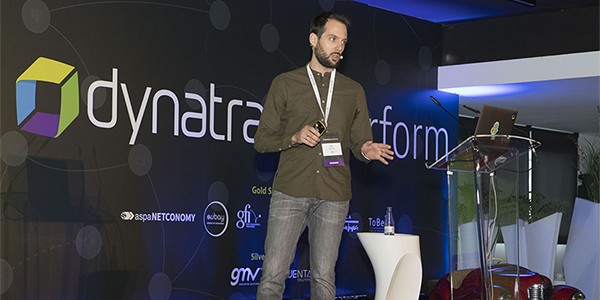More time to innovate and accelerate digital transformation, less time spent resolving problems

Some years ago, Dynatrace faced the challenge of being able to provide a response to organisations in its digital transformation process. The challenge was to be able to make progress in the third generation of its platform, built from scratch, so that it could switch from the provision of application performance management (APM) solutions to being an intelligent software specialist that offers “full-stack” monitoring solutions for all applications, both on-premise and cloud.
For the fifth time, Dynatrace has organised its Perform event in Madrid, where it explained how to accelerate innovation and it unveiled the new capacities that will soon be included in this “new” platform. The event saw the participation of GMV, client and partner of Dynatrace, as well as the involvement in the programme of Pablo Iglesias, Solutions Architect at GMV’s Secure e-Solutions. During his presentation, Iglesias analysed how GMV is migrating from AppMon to Dynatrace, with its respective advantages and reasons for carrying out the change. Without doubt, this change has been a complete success, offering an unequalled simplicity and intelligence, leaving more time to innovate and accelerate the digital transformation, with less time spent on analysing and resolving problems.
There are currently more than 600 clients who use this platform, providing them with detailed information about their applications, infrastructures and architectures, analytical capacities that allow them to discover behaviour patterns and identify what is not working well in order to solve it. In short, a platform in which the technologies of analytics, automation and Artificial Intelligence are vital to business success.
GMV’s experience with the Dynatrace platform is a clear example of a positive experience, taking advantage of the better quality of data, the organisation of multiple applications (Host Groups, Management Zones, Tags VS System Profiles and Agent Groups), the detection of problems (root cause and impact on users and services) and specific decisions with deterministic Artificial Intelligence (dependency maps and multidimensional baselining), among other advantages. A change that is still in process, with the next step focusing on automation, exploiting the use of the API: design of automatic E2E tests based on users’ real use of the applications, integration of alerts into service desks, reporting with external tools, etc.
In order to tackle the challenges and opportunities thrown up by the digital era, all companies without exception must opt to either lead digitalisation or adapt to the new digital environment. In short, as Pablo Iglesias put it in his presentation, "digitalization is not an option, it’s clearly a need."